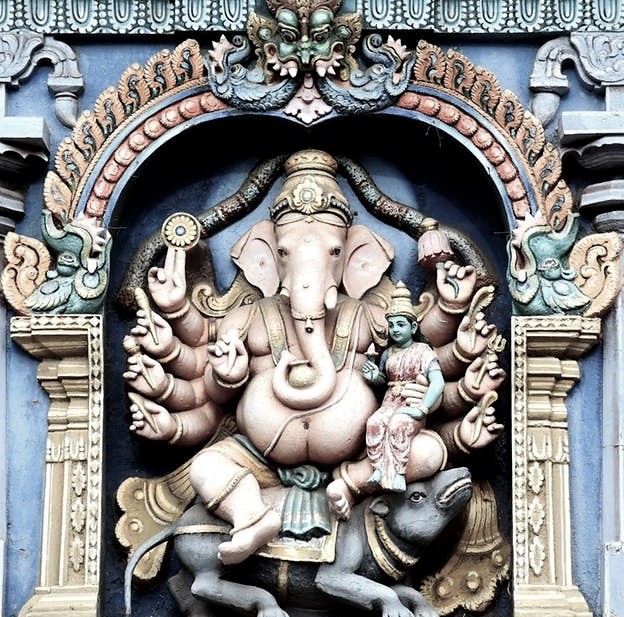- Special FeaturesFoundation YearSthala TreeTheerthamRathamArchitectureOther Speciality
- Sthala Puran
Munishswaran (Tamil: முனீஸ்வரன, lit.: Sage-like Lord) is a Tamil folk deity popular in northern Tamil Nadu, India. He is a male deity usually depicted as three stones or just one stone with religious marking. The deity is considered a family or village guardian. There are many versions of this deity popular in different parts of Tamil Nadu.
For the many thousands of years that Tamil people have existed in southern India, they have been nature worshipers. Like Pagans, they considered that women were the center of life,a source of rejuvenation and an entity to be revered for survival. By early 250 BCE, Tondai Nadu comprised the northeastern region of Tamil Nadu, which was ruled by the Kalabhras, who had adopted Buddhism from the Mauryas and the Satavahanas of the north. At this time, farmers were great followers of Buddhism, as it took away the rigidity of Vedic rituals and brahminism. With the fall of the Kalabhras and rise of the Pallavas, the Buddhist monks gave up their religion. "Muni" in Tamil refers to the braided and coiled hair worn by these sages and nomads and "Ishwar" means 'lord', and therefore farmers started calling their Buddhist monks Munishwarans. As time went by, with the influence of Śaiva kings of the Pallava kingdom, they were replaced as village guardian deities.
Ratha Muni, identified as a stronger deity, is generally associated with saving the village or the farms that surround him. He is prone to accept animal sacrifices and drink the blood of these animals offered to him from the village.
Kotai Muni is depicted with soldier figurines who protect the town or the fort of rulers. These portrayals are of men carrying long swords and round shields.
- Architecture
- Alankar of Deity
- Prayers and BenefitsSpecial Vratas and PrayersOfferings to Deity
Pal Muni is identified as a vegetarian deity who does not accept any animal sacrifice. He is preferred as the family deity by many. Houses usually depict him with three burnt bricks marked with three Śaiva strips of ashes and a red kumkum dot, made of turmeric and slaked lime, in the center.
Stotras and Mantras
- Festivals
- Sodasha Upcharas
- Prasadhas
- Social ActivitiesAnnadhanMarriageEar BoringHead ShaveDanaasEducation FacilitiesSocial DrivesOther Activities
- Arjita Seva
- Tags

